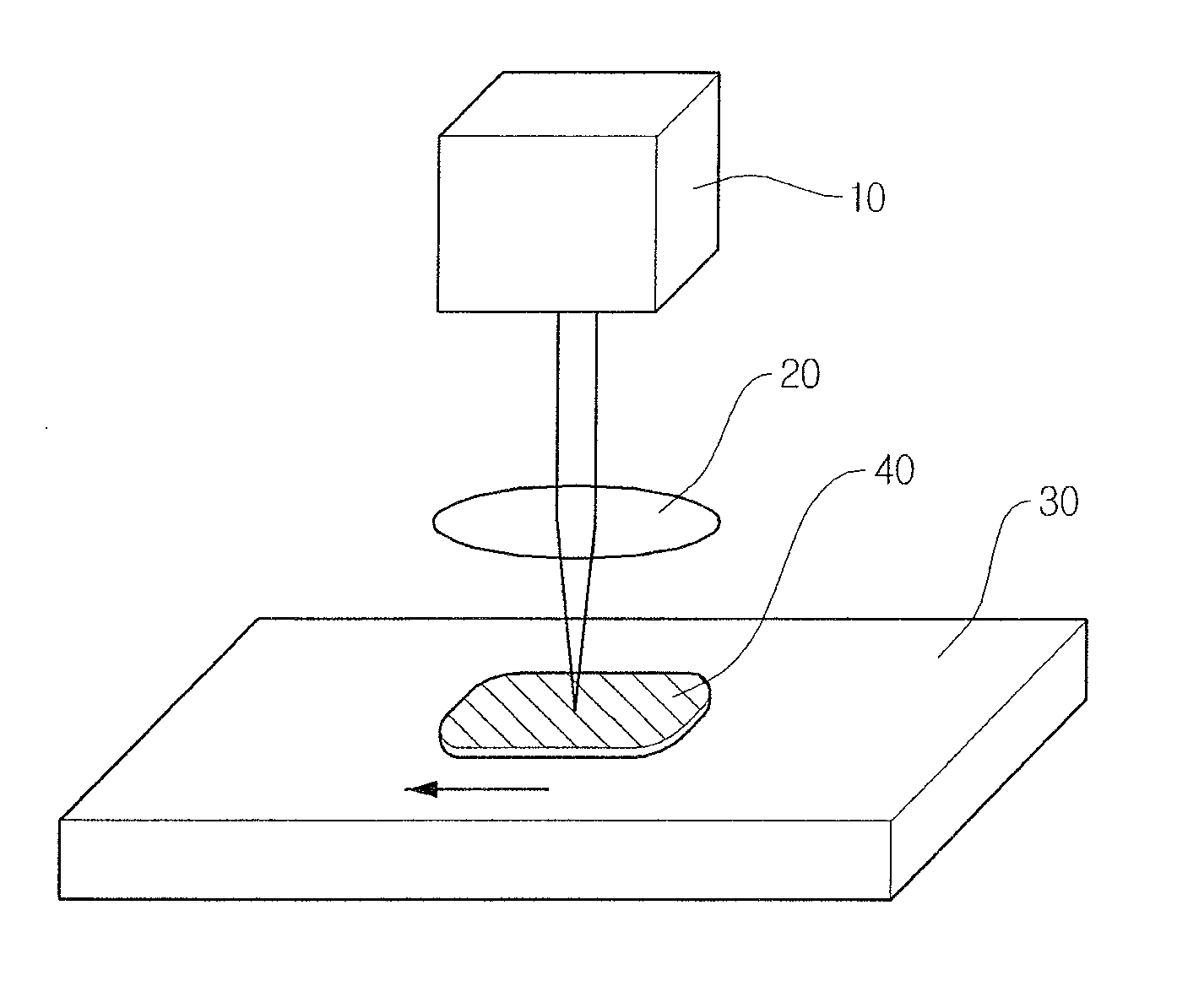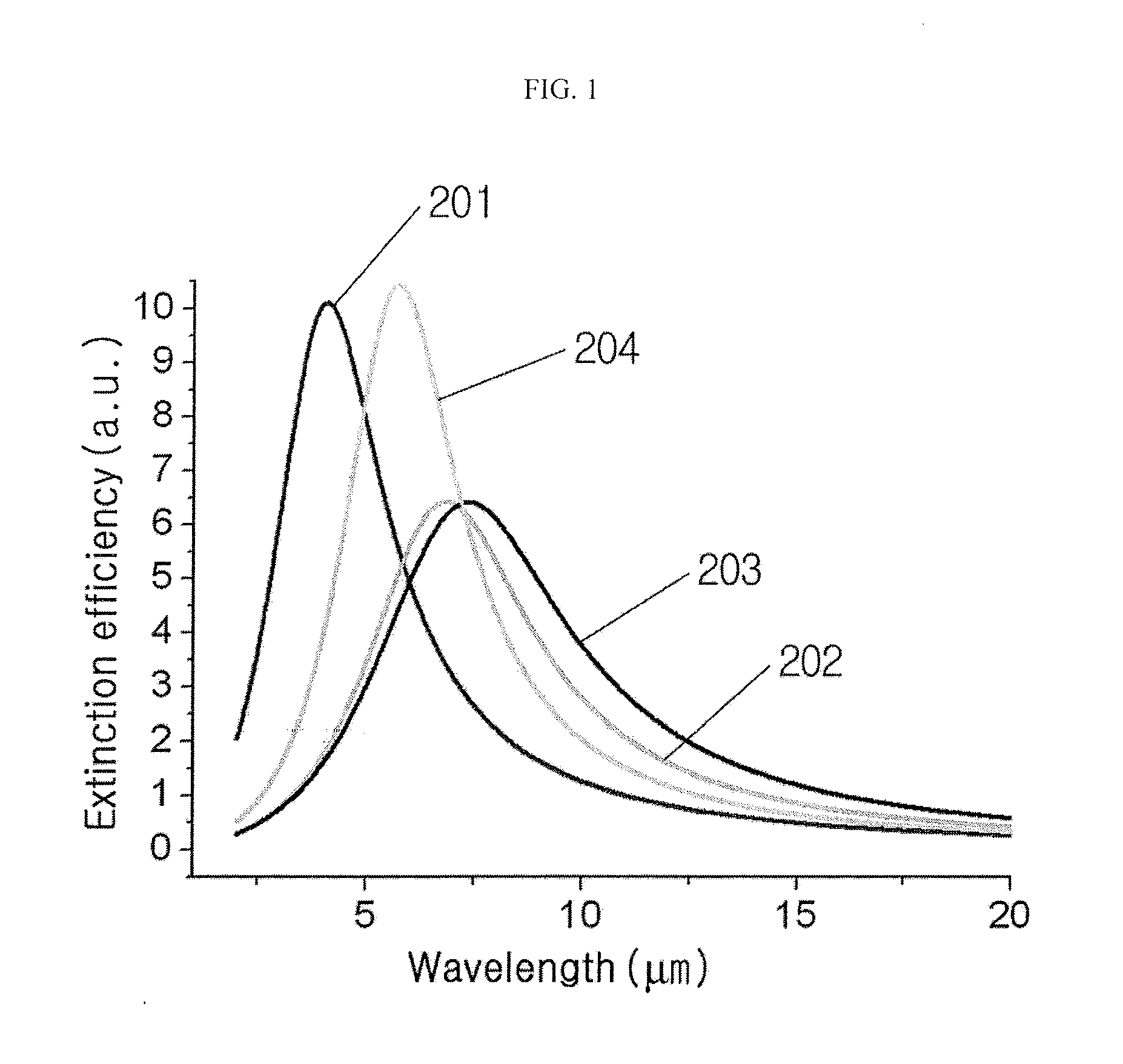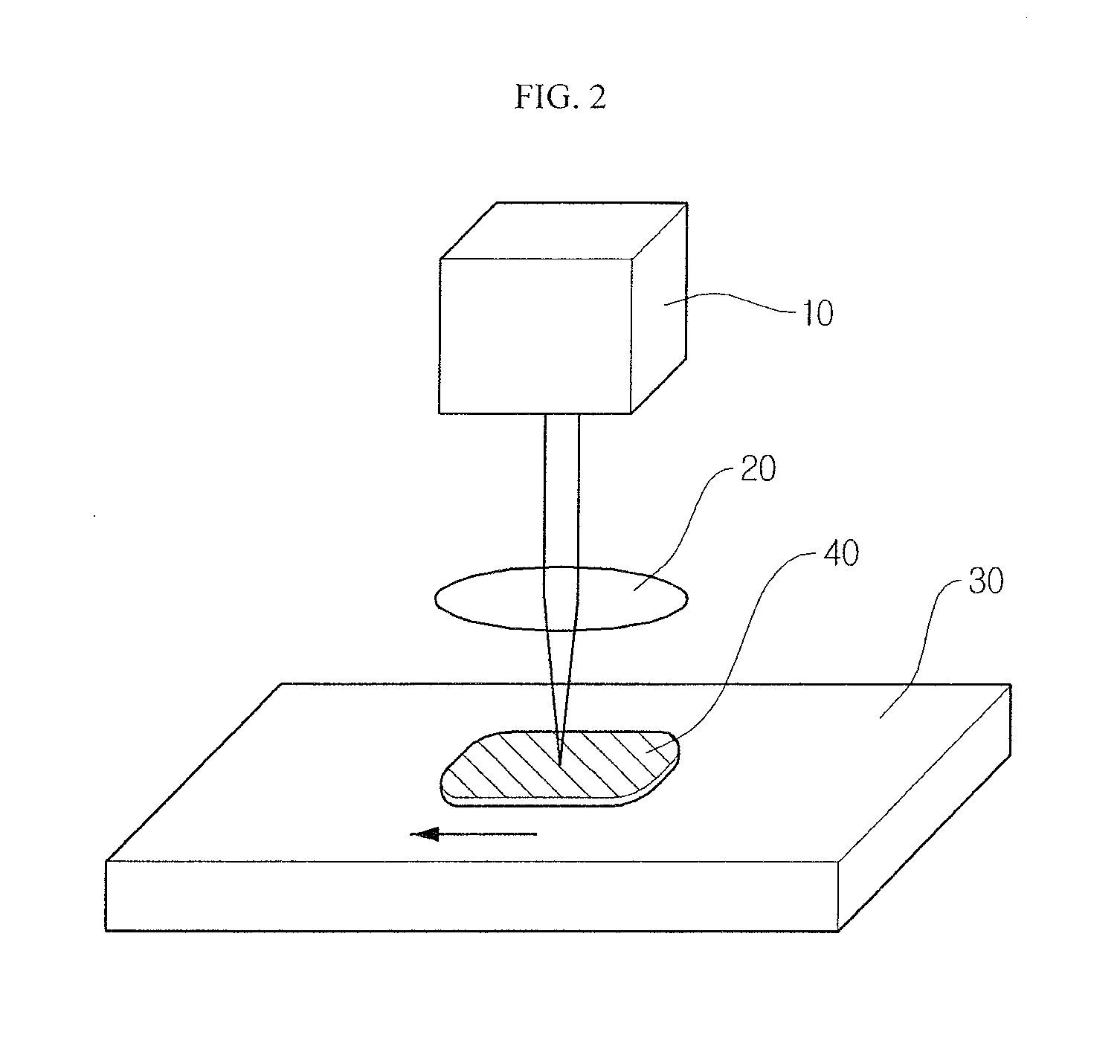Localized surface plasmon resonance sensor using chalcogenide materials and method for manufacturing the same
a technology of chalcogenide and localized surface plasmon, which is applied in the field of can solve the problems of difficult modification of the structure of precious metal materials, difficult to detect biomarkers with existing localized surface plasmon resonance sensors using precious metals, and complicated doping process
- Summary
- Abstract
- Description
- Claims
- Application Information
AI Technical Summary
Benefits of technology
Problems solved by technology
Method used
Image
Examples
Embodiment Construction
[0020]Hereinafter, embodiments of the present disclosure will be described in detail referring to the attached drawings.
[0021]A localized surface plasmon resonance (LSPR) sensor according to an exemplary embodiment may comprise a light source, an LSPR excitation layer and a detector. The light source may irradiate light to the LSPR excitation layer. The LSPR excitation layer generates localized surface plasmons as being excited by incident light of a specific resonance wavelength. As a result, at the resonance wavelength, most of light energy is transferred to free electrons in the LSPR excitation layer. The detector may detect a light absorption signal and / or a light scattering signal by detecting light penetrating the LSPR excitation layer or reflected on the LSPR excitation layer.
[0022]The LSPR phenomenon is characterized by light absorption associated with the resonance and light scattering associated with energy relaxation. Accordingly, the characteristics of the LSPR resonance...
PUM
 Login to View More
Login to View More Abstract
Description
Claims
Application Information
 Login to View More
Login to View More - R&D
- Intellectual Property
- Life Sciences
- Materials
- Tech Scout
- Unparalleled Data Quality
- Higher Quality Content
- 60% Fewer Hallucinations
Browse by: Latest US Patents, China's latest patents, Technical Efficacy Thesaurus, Application Domain, Technology Topic, Popular Technical Reports.
© 2025 PatSnap. All rights reserved.Legal|Privacy policy|Modern Slavery Act Transparency Statement|Sitemap|About US| Contact US: help@patsnap.com



